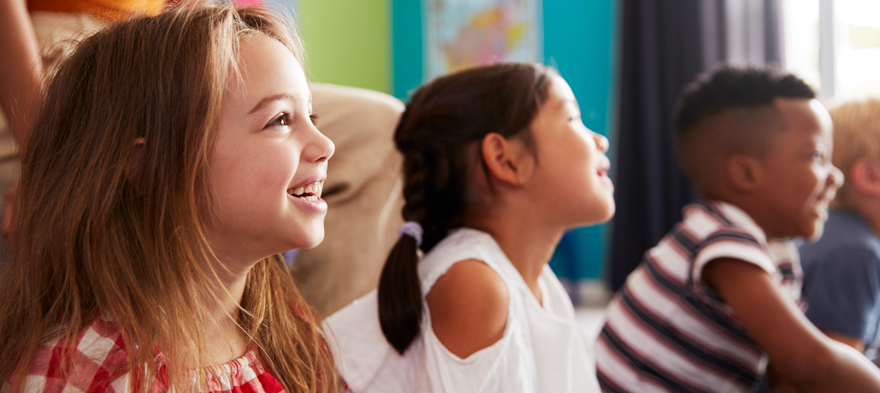
Sep 17, 2020 12:00:00 AM
Anyone who has ever been in a strategic planning meeting has been told that “hope is not a strategy.” We’re told instead to be clear-eyed about turning opportunity into revenue by having explicit, measurable goals.
But right now, in 2020, I would argue hope is needed as much as any other strategy that schools are deploying. We are undergoing incredibly powerful and much needed systemic changes. [pullquote position="right"]Hope is the catalyst that is necessary to help our students and communities navigate these turbulent times.[/pullquote]
Having worked in schools for over 25 years, I recognize the incredible challenges that teachers and students are currently facing. While I am a determined realist, I am also an optimist who has seen the power of hopeful teachers lift the tenor and prospects of students, particularly those farthest from opportunity. Being visibly hopeful is a decision that our students need us to make.
To say these are unprecedented times is a gross understatement. We live in a pandemic that has closed many in-person schools and left parents without ideal options for their children’s education. Our ability to re-open them remains imperiled. We live in a country wrestling with a long-overdue racial awakening that has made our work as educators even more significant. And we live in a divisive political atmosphere that makes normally difficult conversations nearly impossible.
The ground beneath the feet of educators is constantly shifting and instability has become the new norm. Teachers are worried about their physical and mental safety, as well as the safety of those they serve. Simultaneously, they are worried about their effectiveness to deliver instruction remotely. It would be easy to wring our hands over this ambiguity. I choose not to do that, and I’m witnessing a similar refusal from educators across the country.
Instead, [pullquote]I’m watching teachers and principals across our nationwide network of schools demonstrate hope and possibility[/pullquote] to hundreds of thousands of students and their families, even amidst their own uncertainty. Teachers are saying that we will get through this together: it won’t be easy, but we can and will do more than just manage.
In New York City, Dr. Samona Tait, principal at Inwood Early College High School, sent a video message to students reminding them of their strength, their power in unity and how smart they are. She urged them, above all, to maintain relationships with school staff and one another.
We have each other. Together, we can do anything. We got this!
The staff conducted bi-weekly, in-person check-ins with students and families. They drove caravan style to all five New York City Boroughs this past spring to show the students they were not alone and to bring hope.
We are amidst a true education revolution. Granted we were thrown into this, but we will come out stronger and better than before. We are learning what comprises the critical components of education, because we no longer have the luxury of relying on legacied traditions and practices.
Because of COVID, we have been driven to reflect on what is necessary and we have begun pruning our educational system, cutting back what doesn’t serve. We are seeing the barriers that exist for too many students, and we are finding ways to remove them. [pullquote position="right"]Hope is heralding new possibilities.[/pullquote] We are seeing creativity flourish as educators find new approaches to teach and inspire, so each and every student truly thrives.
When the way forward is uncertain, when the path is unclear, we must rely on each other and relationships are the means by which we transfer hope. Our collective energy is contagious and hope is illuminating the path forward. Chuck Ochocki, Principal of South Saint Paul High School in Minnesota, shared that just as the students look to teachers for inspiration and care, the community looks to schools as a beacon of hope as they educate and support the next generation. He said,
Without hope, success and change is not possible.
Students need hope from teachers every bit as much as they need help understanding algebraic equations or improving topic sentences. And make no mistake – teachers need it, too. When teachers pour hope from their hearts into the hearts of their students, those students will reflect it back.
Angela Jerabek is the developer of the Building Assets, Reducing Risks (BARR) model, a licensed K-12 teacher, and a secondary school counselor in Minneapolis, Minnesota. Angela is an author, speaker and innovator in education. She developed the BARR model in 1998 and now also serves as the executive director of the BARR Center, providing thought leadership, evaluation services and oversight for the BARR model and the national BARR network. Angela’s expertise lies in secondary school improvement, equity, youth development, counseling adolescent and families, and using evidence in schools.
The story you tell yourself about your own math ability tends to become true. This isn’t some Oprah aphorism about attracting what you want from the universe. Well, I guess it kind of is, but...
If you have a child with disabilities, you’re not alone: According to the latest data, over 7 million American schoolchildren — 14% of all students ages 3-21 — are classified as eligible for special...
The fight for educational equity has never been just about schools. The real North Star for this work is providing opportunities for each child to thrive into adulthood. This means that our advocacy...
Your donations support the voices who challenge decision makers to provide the learning opportunities all children need to thrive.
Ed Post is the flagship website platform of brightbeam, a 501(c3) network of education activists and influencers demanding a better education and a brighter future for every child.
© 2020–2024 brightbeam. All rights reserved.
Leave a Comment